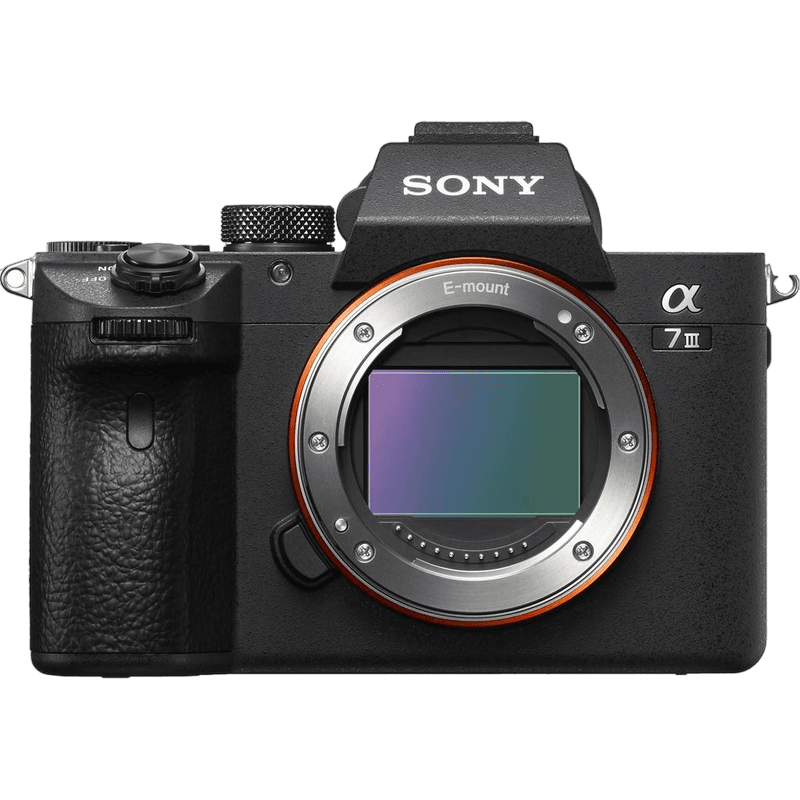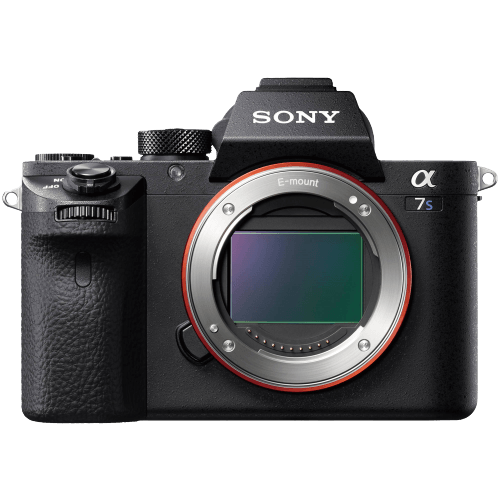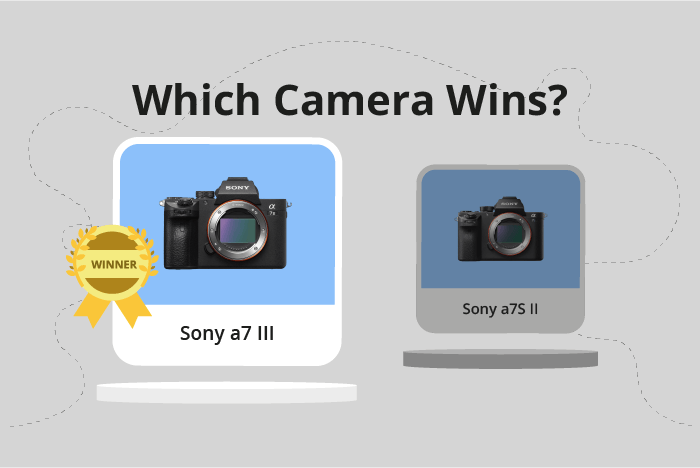Sony a7 III vs a7S II Comparison
Sony a7 III

Sony a7S II

The Sony a7 III emerges as the winner with a score of 81, compared to the Sony a7S II‘s 60/100. Both cameras are mirrorless and share the same dimensions of 127 x 96mm. However, the a7 III is slightly thicker at 74mm and heavier at 650g, while the a7S II weighs 627g and has a depth of 60mm.
The a7 III, released in 2018, boasts a lower launch price of $2000, making it a more affordable option than the a7S II, which was released in 2015 with a launch price of $3000. Despite the price difference, the a7 III’s superior score indicates that it offers better value for money.
On the other hand, the a7S II has a minor advantage in terms of weight, being slightly lighter than the a7 III. However, this small difference is not enough to make a significant impact on the overall performance and value of the camera.
Taking these factors into account, the Sony a7 III stands out as the better camera, offering superior performance at a more affordable price, while the a7S II’s only advantage is its marginally lighter weight.
Sony a7 III vs a7S II Overview and Optics
The Sony a7 III triumphs over the Sony a7S II in optics with a score of 81/100 compared to 66/100. Both cameras share several specifications, such as a CMOS sensor, Bionz X processor, full-frame sensor size, Sony FE lens mount, and image stabilization. However, the Sony a7 III outperforms the a7S II in certain aspects, leading to its higher score.
The a7 III boasts a higher megapixel count of 24.2 compared to the a7S II’s 12.2, resulting in more detailed and higher resolution images. Additionally, the a7 III offers a faster shooting speed of 10 frames per second, doubling the a7S II’s 5 frames per second. This makes the a7 III more suitable for capturing fast-moving subjects and action shots. The a7 III also has a higher DXOMARK sensor score of 96, outshining the a7S II’s score of 85. This indicates that the a7 III has better overall image quality and low-light performance.
On the other hand, the a7S II does not have any distinct advantages over the a7 III in terms of optics. Its lower megapixel count and shooting speed may limit its appeal for photographers who require high resolution and fast shooting capabilities.
Taking these factors into consideration, the Sony a7 III is the superior camera in terms of optics. Its higher megapixel count, faster shooting speed, and better sensor performance make it a more versatile and powerful option for photographers. While the Sony a7S II shares some common features with the a7 III, it falls short in delivering the same level of image quality and speed, making the a7 III the clear winner in this comparison.
Sony a7 III vs a7S II Video Performance
The Sony a7 III and the Sony a7S II run closely in their video capabilities. These cameras share several video specifications, including a max video resolution of 4K, max video dimensions of 3840 x 2160, and a max video frame rate of 30fps.
Despite having the same video score, the Sony a7 III has some advantages over the Sony a7S II. The a7 III is known for its impressive autofocus system, which can help videographers achieve fast and accurate focus during video recording. This can lead to smoother, more professional-looking videos with less effort.
On the other hand, the Sony a7S II excels in low-light performance, making it a better choice for those who frequently shoot in challenging lighting conditions. The a7S II’s sensor is specifically designed to capture high-quality video in low light, giving it an edge over the a7 III in this aspect.
Taking these factors into account, both cameras offer strong video capabilities, with the Sony a7 III having an advantage in autofocus performance and timelapse, while the Sony a7S II is the better choice for low-light videography. Users should consider their specific video needs when choosing between these two cameras, as each camera’s strengths cater to different shooting situations.
Sony a7 III vs a7S II Features and Benefits
The Sony a7 III and the Sony a7S II share several specifications, including a 3-inch screen size, flip screen, absence of GPS, and WIFI capabilities. However, the a7 III outperforms the a7S II in certain aspects, while the a7S II has its advantages as well.
The a7 III boasts a touchscreen, allowing for easier control and navigation, while the a7S II lacks this feature. Additionally, the a7 III has Bluetooth connectivity, enabling seamless transfer of images and remote control of the camera. These enhancements contribute to the a7 III’s higher feature score and make it a more user-friendly option.
On the other hand, the a7S II has a higher screen resolution of 1,228,800 dots compared to the a7 III’s 921,600 dots. This results in a sharper and more detailed display on the a7S II, which can be beneficial for photographers who value image clarity during shooting and playback.
Given the differences in features, the Sony a7 III stands out as the better camera due to its touchscreen and Bluetooth capabilities, making it more versatile and convenient to use. The Sony a7S II, though lacking in these areas, still holds its ground with a higher screen resolution, providing users with a more detailed display. Ultimately, the choice between these two cameras depends on the individual photographer’s preferences and priorities.
Sony a7 III vs a7S II Storage and Battery
The Sony a7 III outperforms the Sony a7S II in storage and battery, with a score of 81 compared to the a7S II’s 21/100. Both cameras share compatibility with SD/SDHC/SDXC and Memory Stick Duo/Pro Duo/Pro-HG Duo memory cards. However, the a7 III offers two memory card slots, doubling the a7S II’s single slot.
The a7 III also boasts superior battery life, delivering 750 shots per charge using the NP-FZ100 battery, while the a7S II manages only 370 shots with its NP-FW50 battery.
Though the a7S II falls short in storage and battery capacity, it may still be a suitable choice for users who prioritize other features or have a lower budget. In terms of storage and battery, the Sony a7 III clearly outshines the a7S II, making it the preferable option for those who need longer shooting times and more storage capacity.
Sony a7 III vs a7S II – Our Verdict
Are you still undecided about which camera is right for you? Have a look at these popular comparisons that feature the Sony a7 III or the Sony a7S II:

